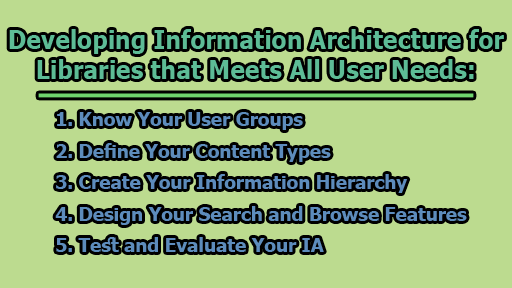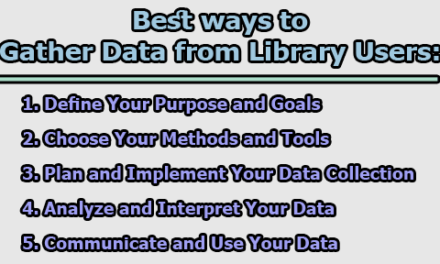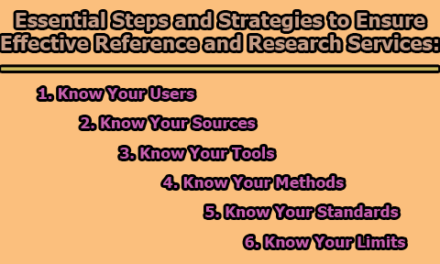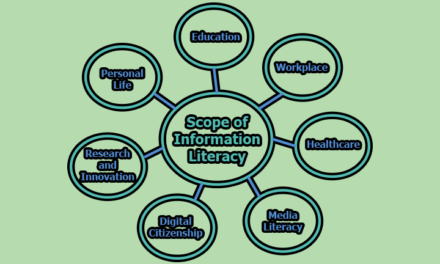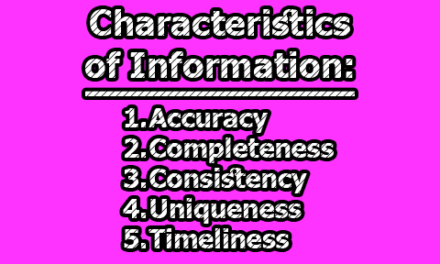Developing Information Architecture for Libraries that Meets All User Needs:
In an age where information is abundantly available, creating a seamless user experience is crucial for libraries. Information architecture (IA) plays a pivotal role in shaping how users interact with a library’s digital platforms, website, and catalog. A well-designed IA ensures that users can easily find, access, and use the information they need, ultimately enhancing their satisfaction. In this article, we will explore developing information architecture for libraries that meets all user needs.
1. Know Your User Groups: Understanding the user is paramount in creating a successful IA. Libraries serve a broad spectrum of users, including students, faculty, researchers, staff, alumni, and community members, each with unique characteristics and preferences. To design an IA that accommodates these diverse user groups, it is crucial to identify their needs, goals, and behaviors. Various methods such as surveys, interviews, focus groups, analytics, and personas can be employed to gather data. This data will inform decisions about the IA by defining user preferences and expectations.
2. Define Your Content Types: The next step in IA design is defining content types and their attributes. Content types are the fundamental categories of information, each with its own structure and format. For a library, content types may include books, journals, databases, guides, events, news, and policies. Each content type is associated with attributes that describe its properties, such as title, author, date, subject, format, and location. Creating a content inventory is essential to list and analyze the content types and attributes required for your library’s website, catalog, and other digital platforms.
3. Create Your Information Hierarchy: Once content types and attributes are established, the information hierarchy and navigation must be constructed. The information hierarchy represents how content types are organized into meaningful categories and subcategories. Navigation, on the other hand, provides users with access and orientation within this hierarchy through menus, links, labels, and icons. Techniques like card sorting, tree testing, and mind mapping can be employed to create an IA that is clear, consistent, and intuitive for all user groups.
4. Design Your Search and Browse Features: Search and browse are two primary methods users employ to find information in libraries. Search enables users to enter keywords or queries to retrieve relevant results, while browse allows users to explore information through predefined paths or filters. Designing search and browse features involves the use of various tools such as search engines, facets, filters, tags, and breadcrumbs. The objective here is to offer users flexible and relevant options for locating the information they seek.
5. Test and Evaluate Your IA: The final step in IA design is continuous testing and evaluation. This ongoing process involves gathering feedback and data from user groups and measuring the performance and usability of the IA. Usability testing, user feedback, analytics, and heuristic evaluation are some of the methods that can be used to identify and rectify any issues or gaps in the IA. The ultimate goal is to improve user experience and satisfaction continuously.
In conclusion, creating an information architecture that caters to the diverse needs of all library user groups is a challenging but rewarding endeavor. By following these steps, libraries can design an IA that enhances the user experience and ensures that users can easily find and access the information they need. In the digital age, where information is abundant, a well-structured IA is essential to the success of any library’s digital platforms, website, and catalog.

Former Student at Rajshahi University

